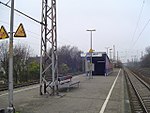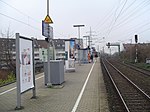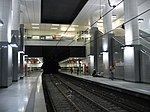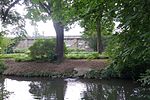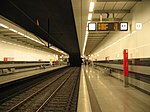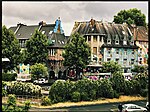Düsseldorf-Lierenfeld
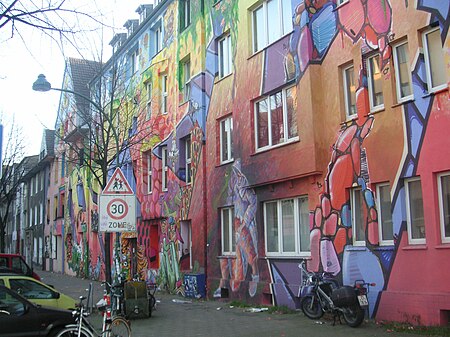
Lierenfeld is an urban borough of Düsseldorf. It borders on Eller, Oberbilk, Flingern and Wersten. Lierenfeld was a conglomerate of homesteads when it became a part of Düsseldorf in 1384. For a long while Lierenfeld had an agricultural character. It changed in the time of the Industrial Revolution. It became mainly an industrial district. In the 1920s the city of Düsseldorf tried to develop it to a nicer living area with a garden settlement. But Lierenfeld is mainly still an industrial area. There has been a change since the beginning of the 1990s: An old steelwork transmogrified to a great area discothèque – called "Stahlwerk" (steelwork in German), another disco is called "Tor 3" (gate 3 in German). So Lierenfeld became a party and subculture area. This article is based on a translation of an article from the German Wikipedia.
Excerpt from the Wikipedia article Düsseldorf-Lierenfeld (License: CC BY-SA 3.0, Authors, Images).Düsseldorf-Lierenfeld
Gatherweg, Dusseldorf Lierenfeld (Stadtbezirk 8)
Geographical coordinates (GPS) Address Nearby Places Show on map
Geographical coordinates (GPS)
| Latitude | Longitude |
|---|---|
| N 51.209166666667 ° | E 6.8277777777778 ° |
Address
Gatherweg 81
40231 Dusseldorf, Lierenfeld (Stadtbezirk 8)
North Rhine-Westphalia, Germany
Open on Google Maps

